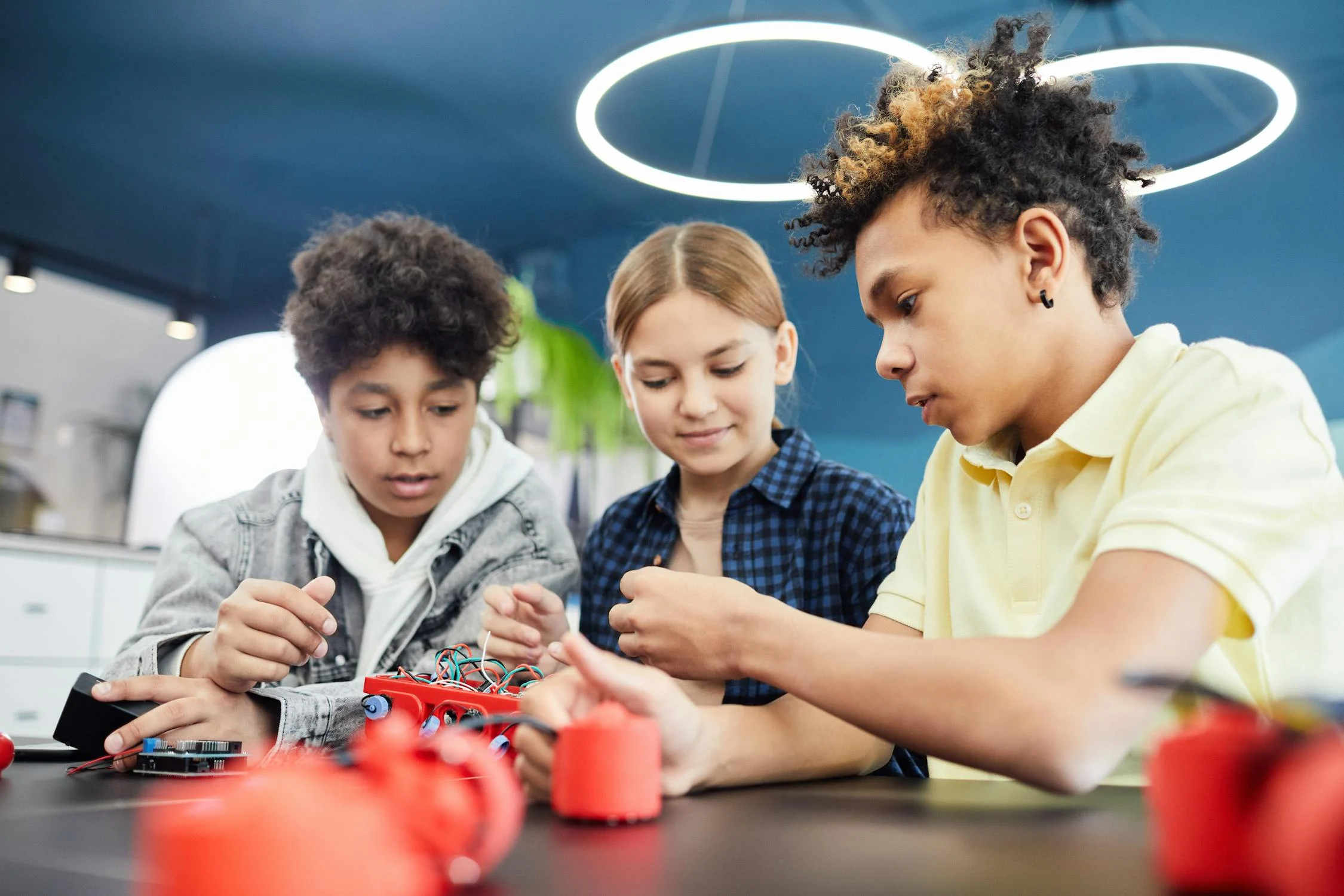This chapter of the Gekokujyo program marks a crucial stage in Sefiria’s journey as a child prodigy. In this part, we observe her growth in understanding complex systems, applying logic, and managing unexpected challenges with a calm and thoughtful approach. The story highlights lessons that can be applied to personal development, learning techniques, and problem-solving.
This article will explain the key moments of Chapter 22.2, what makes the program unique, and how readers can learn from Sefiria’s experiences. Each section breaks down important ideas with examples, tips, and practical insights.
Understanding the Gekokujyo Program
The Gekokujyo Program is designed as an intensive training system focusing on self-growth through critical thinking, discipline, and strategic planning. It challenges participants to question existing assumptions and encourages developing original solutions.
Sefiria, as a child prodigy, is the perfect candidate to push the limits of this program. Chapter 22.2 dives into her struggle to balance rapid learning and emotional maturity.
What Makes the Gekokujyo Program Effective?
- Focus on problem-solving over memorization
- Encouragement to question norms and challenge authority respectfully
- Emphasis on self-reflection and adapting strategies
- Balanced mental and emotional growth
Tips to Apply from the Program
- When learning something new, ask yourself “Why?” rather than just “What?”
- Write down at least three ways a problem could be solved before seeking answers
- Allow yourself time to process emotions before making important decisions
Example from Chapter 22.2
Sefiria faces a complex task that requires her to find loopholes in a flawed system. Instead of rushing, she lists all potential consequences and chooses the least harmful path. This shows the importance of thoughtful decision-making under pressure.
| Program Element | Description | How to Use in Daily Life |
|---|---|---|
| Critical Thinking | Analyze issues from different angles | Pause before reacting; consider options |
| Emotional Control | Recognize feelings without being overwhelmed | Practice deep breathing when stressed |
| Self-Reflection | Regularly evaluate your choices and results | Keep a daily journal of decisions |
| Strategic Planning | Set goals with clear steps and possible risks | Break projects into smaller tasks |
Sefiria’s Learning Style and How It Can Help You
Sefiria shows a unique way of learning that combines observation, active problem-solving, and constant questioning. Unlike traditional rote learning, she prefers hands-on experience and real-life application.
Key Traits of Sefiria’s Learning Approach
- Observation First: Before acting, she watches how a system works to understand hidden rules.
- Experimentation: She tests different methods to see what works best.
- Feedback Loop: She takes note of failures and uses them to improve future attempts.
- Patience: She knows learning takes time and avoids frustration.
How to Adapt This Style
- Watch how experts handle tasks before trying yourself.
- Try multiple approaches instead of sticking to one solution.
- Accept mistakes as part of learning and analyze them calmly.
- Avoid rushing; give yourself time to understand fully.
Practical Example
In Chapter 22.2, Sefiria is assigned to solve a puzzle that others failed at. Instead of jumping in, she observes the previous attempts. Then she tries a different tactic based on what she saw, which leads her to success.
| Trait | How Sefiria Uses It | How You Can Use It |
|---|---|---|
| Observation | Watches previous mistakes | Pay attention to how others solve problems |
| Experimentation | Tests various approaches | Try different study or work methods |
| Feedback Loop | Learns from failures | Review mistakes and adjust |
| Patience | Waits before concluding | Take breaks if stuck, return fresh |
Emotional Challenges in Rapid Growth
One significant theme in Chapter 22.2 is Sefiria’s struggle with emotional overload. Rapid learning and high expectations sometimes leave her feeling isolated and stressed. This is a common issue among gifted individuals.
Recognizing Emotional Burnout
- Feeling constantly tired or overwhelmed
- Loss of interest in activities you once enjoyed
- Irritability or frustration over small things
- Difficulty concentrating despite strong ability
Tips to Manage Emotional Stress

- Set clear boundaries for work and rest times.
- Talk to someone trustworthy about your feelings.
- Engage in simple activities that relax you, like walking or listening to music.
- Avoid pushing yourself to perfection every time.
Expert Insight
Dr. Elaine Matthews, a child psychologist, says, “Gifted learners often face pressure to always perform. Recognizing the need for emotional rest is key to maintaining both mental and physical health.”
Example from Chapter 22.2
After a long day of intense problem-solving, Sefiria feels the weight of expectations. She chooses to spend time drawing quietly instead of continuing work, showing that rest can be productive.
| Symptom | Possible Cause | Suggested Action |
|---|---|---|
| Feeling tired quickly | Overworking the mind | Schedule short breaks |
| Losing interest | Burnout | Re-engage with fun hobbies |
| Irritability | Stress or frustration | Practice calming exercises |
| Poor focus | Mental exhaustion | Change environment or activity |
Strategic Thinking: Breaking Problems Into Manageable Steps
Sefiria demonstrates strong strategic thinking in this chapter. Instead of tackling a problem all at once, she breaks it down into smaller parts and solves each one carefully.
Why Breaking Down Problems Works
- Makes the problem less intimidating
- Helps identify specific challenges
- Allows for progress tracking
- Reduces errors by focusing on details
How to Practice This Skill
- Identify the main goal clearly.
- List all smaller tasks that contribute to the goal.
- Set priorities for which tasks to complete first.
- Track progress and adjust as needed.
Example from the Chapter
Sefiria is tasked with decoding a complex message. She divides it into segments based on clues, solving each piece one by one rather than attempting to decode it all at once.
| Step in Strategic Thinking | Explanation | Practical Tip |
|---|---|---|
| Define Goal | Know exactly what needs solving | Write your goal in one sentence |
| List Tasks | Break goal into smaller tasks | Use bullet points or a checklist |
| Prioritize | Decide order based on importance | Use labels like urgent, important |
| Review | Check progress and adjust steps | Weekly or daily check-ins |
Handling Unexpected Situations Calmly
Chapter 22.2 shows Sefiria facing unexpected obstacles. Instead of panicking, she keeps calm and thinks clearly, which helps her find creative solutions.
Why Staying Calm Matters
- Clears the mind for better thinking
- Prevents rash decisions that cause bigger problems
- Allows time to analyze all options
- Builds confidence for future challenges
Techniques to Maintain Calm
- Slow, deep breaths to reduce anxiety
- Step back and assess before reacting
- Remind yourself that mistakes happen and can be fixed
- Focus on what you can control
Real-Life Application
When a computer program crashes during a critical test, remaining calm and following a recovery plan is more effective than rushing and making mistakes.
Example from Chapter 22.2
Sefiria faces a sudden change in rules during a test. She pauses, thinks through the new rules, and adapts her plan without losing focus.
| Calmness Technique | How It Helps | How to Use |
|---|---|---|
| Deep Breathing | Reduces physical symptoms of stress | Breathe in slowly for 4 seconds, out for 6 |
| Step Back | Creates mental space | Take a 5-minute break to clear mind |
| Positive Reminder | Reduces fear | Say “I can handle this” silently |
| Focus on Control | Limits unnecessary worry | List what you can and cannot change |
Learning from Mistakes: A Growth Mindset
Sefiria’s approach is a clear example of a growth mindset — the belief that abilities improve through effort and learning, not fixed talent.
Characteristics of a Growth Mindset
- Seeing challenges as opportunities
- Understanding mistakes as part of learning
- Persisting despite difficulties
- Seeking feedback actively
Tips to Develop a Growth Mindset
- Replace “I can’t do this” with “I can’t do this yet.”
- After failure, ask “What can I learn?”
- Celebrate effort, not just results.
- Surround yourself with supportive people.
Expert Quote
Carol Dweck, psychologist and author of “Mindset,” says, “The view you adopt for yourself profoundly affects the way you lead your life.”
Example from Chapter 22.2
Sefiria fails to solve one part of a test but quickly reviews her errors, asks questions, and tries a new method. She sees failure as a step forward, not the end.
| Growth Mindset Trait | Why It Matters | How to Practice |
|---|---|---|
| Embracing Challenges | Builds resilience | Take on tasks that stretch your skills |
| Learning from Mistakes | Improves skills over time | Reflect on what went wrong |
| Persistence | Keeps motivation alive | Set small milestones |
| Seeking Feedback | Opens doors to improvement | Ask peers or mentors for advice |
Balancing Logic and Emotion in Decision Making
Chapter 22.2 highlights how Sefiria balances her logical reasoning with emotional awareness. This balance is important for making decisions that are both smart and humane.
Why Balance Is Important
- Pure logic may miss human factors
- Pure emotion may cloud judgment
- Combining both leads to better outcomes
- Helps maintain relationships alongside goals
How to Balance Logic and Emotion
- List facts and data about the problem.
- Identify your feelings and why you feel them.
- Weigh pros and cons objectively.
- Consider how decisions affect others.
Practical Example
Before deciding to challenge a rule, Sefiria thinks about the rule’s purpose and how her actions might impact her peers and mentors.
| Aspect | Logical Approach | Emotional Approach | Balanced Decision |
|---|---|---|---|
| Problem Analysis | Facts, data, cause-effect | Feelings, intuition, empathy | Use facts plus empathy |
| Decision Making | Cost-benefit analysis | Consider personal values | Analyze impact on self and others |
| Communication | Direct, factual statements | Express feelings clearly | Combine clarity and kindness |
Time Management in Intense Learning
Managing time effectively is a crucial skill Sefiria improves in Chapter 22.2. With many demands, knowing how to plan and stick to a schedule helps avoid burnout.
Time Management Strategies
- Prioritize tasks based on urgency and importance.
- Break work into timed intervals (Pomodoro Technique).
- Use planners or digital tools to track deadlines.
- Set realistic goals and deadlines.
Tips for Students and Learners
- Start with the hardest task when energy is highest.
- Take short breaks every 25-30 minutes.
- Avoid multitasking; focus on one thing at a time.
- Review daily what was accomplished and plan for tomorrow.
Example from Chapter 22.2
Sefiria divides her study time into focused sessions and makes sure to include rest. This helps her maintain high performance over long periods.
| Technique | Description | How to Implement |
|---|---|---|
| Prioritization | Rank tasks by urgency | Use Eisenhower matrix |
| Pomodoro Technique | Work 25 mins, break 5 mins | Use timer apps or alarms |
| Scheduling | Plan ahead with deadlines | Use calendars or planners |
| Single-tasking | Focus on one task | Turn off notifications |
Building a Support System for Growth
Even a prodigy like Sefiria needs support. Chapter 22.2 shows the importance of mentors, friends, and family in encouraging progress and providing perspective.
Why Support Matters
- Offers encouragement during setbacks
- Provides alternative viewpoints
- Helps share workload or advice
- Boosts motivation and confidence
Ways to Build Your Support Network
- Find mentors in areas you want to grow.
- Stay connected with friends who motivate you.
- Communicate openly about your struggles.
- Join communities with similar interests.
Example from the Chapter
Sefiria receives guidance from her mentor who helps her see new approaches. Friends also cheer her on when she feels down.
| Support Role | Benefit | How to Find or Build |
|---|---|---|
| Mentor | Expert guidance | Reach out in school or online |
| Peers/Friends | Emotional encouragement | Join clubs or online groups |
| Family | Stability and understanding | Share your goals and feelings |
| Community | Shared resources and advice | Attend workshops or forums |
Summary: Lessons from Chapter 22.2
Chapter 22.2 of the Gekokujyo Program shows many valuable lessons through Sefiria’s journey:
- The value of thoughtful, strategic thinking
- Importance of emotional awareness and balance
- Patience and persistence in learning
- Handling stress and unexpected challenges calmly
- Using mistakes as tools for growth
- Effective time management and support systems
These lessons apply well beyond the story and can help anyone looking to improve their learning, decision-making, and personal development.










